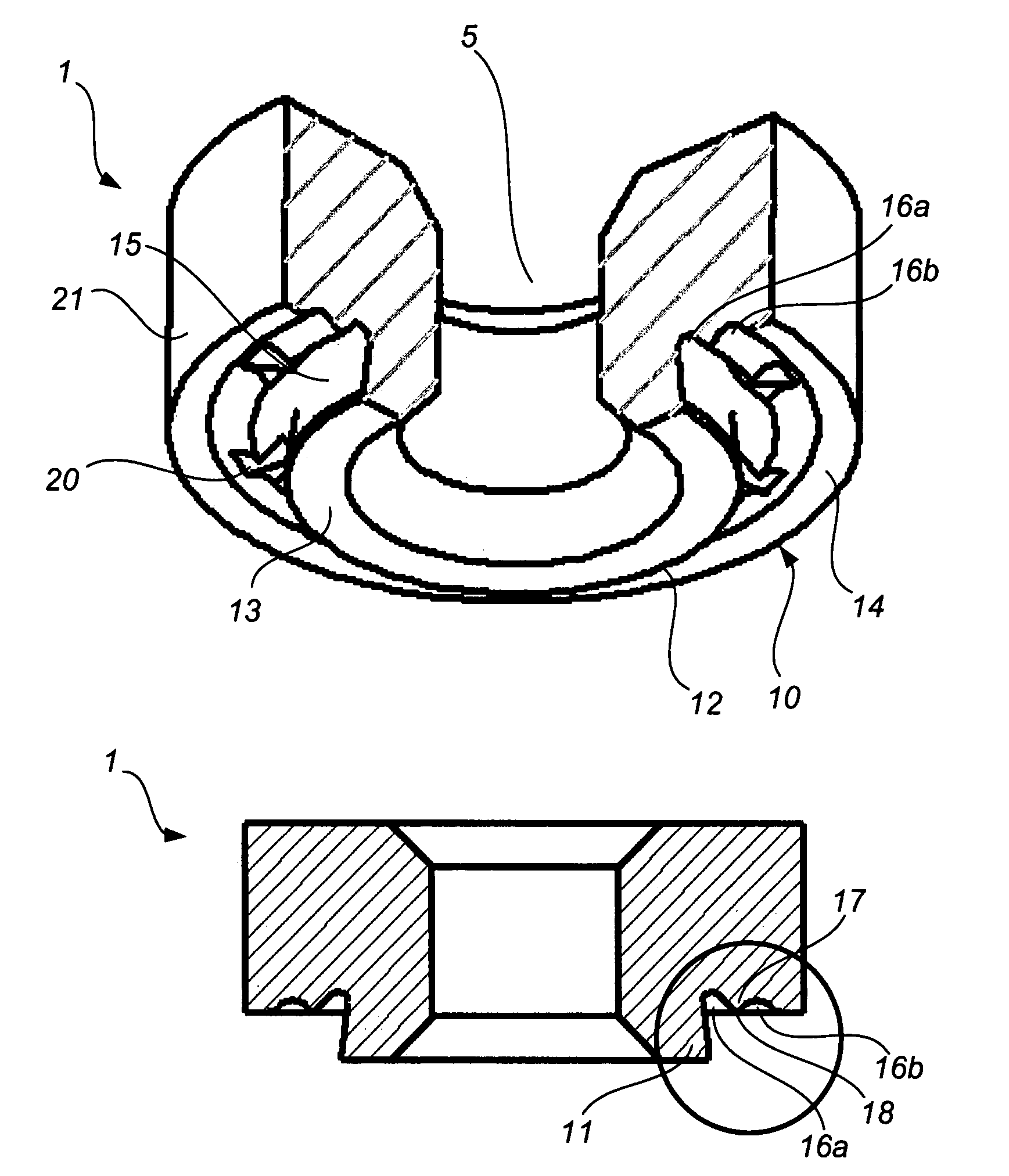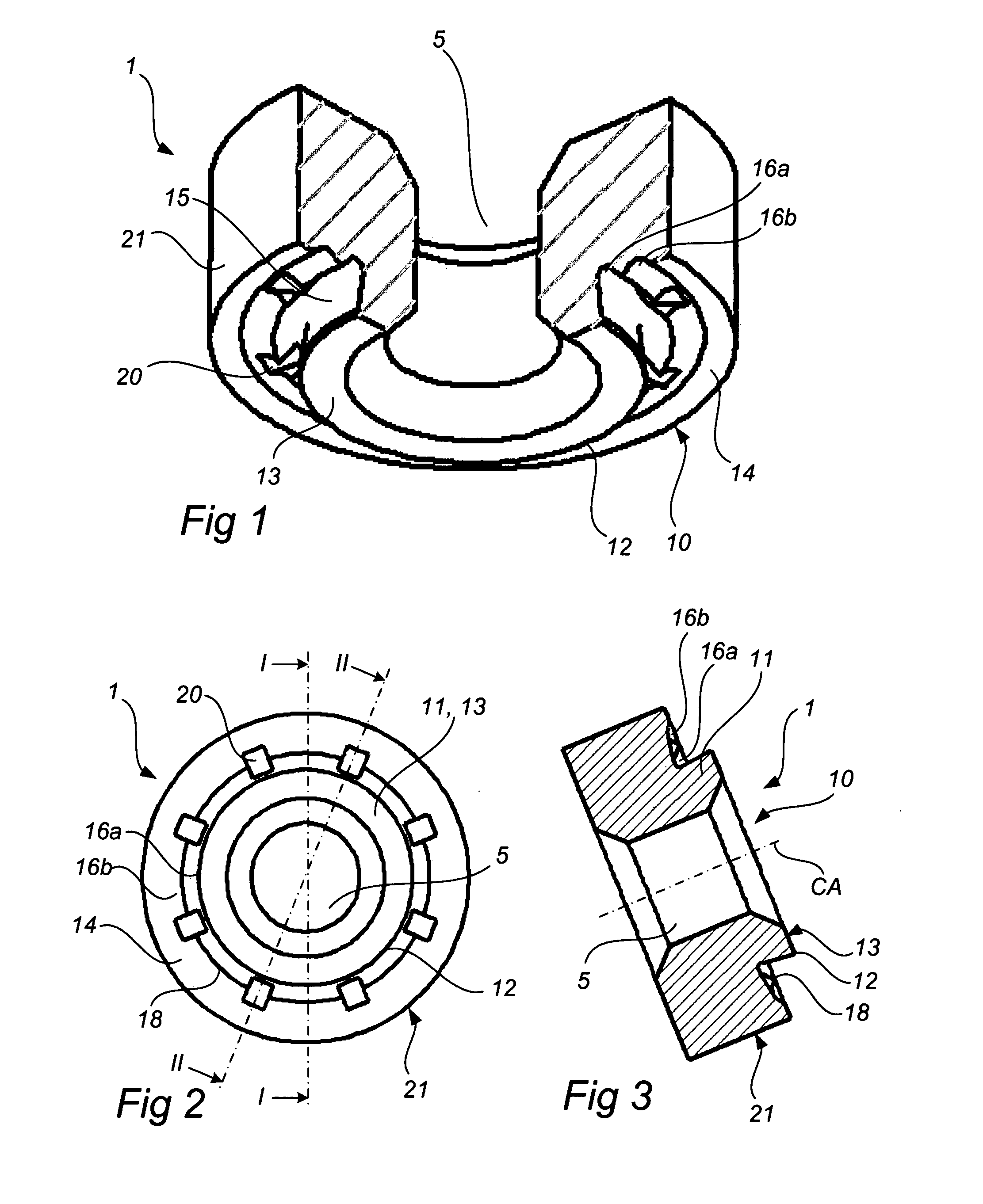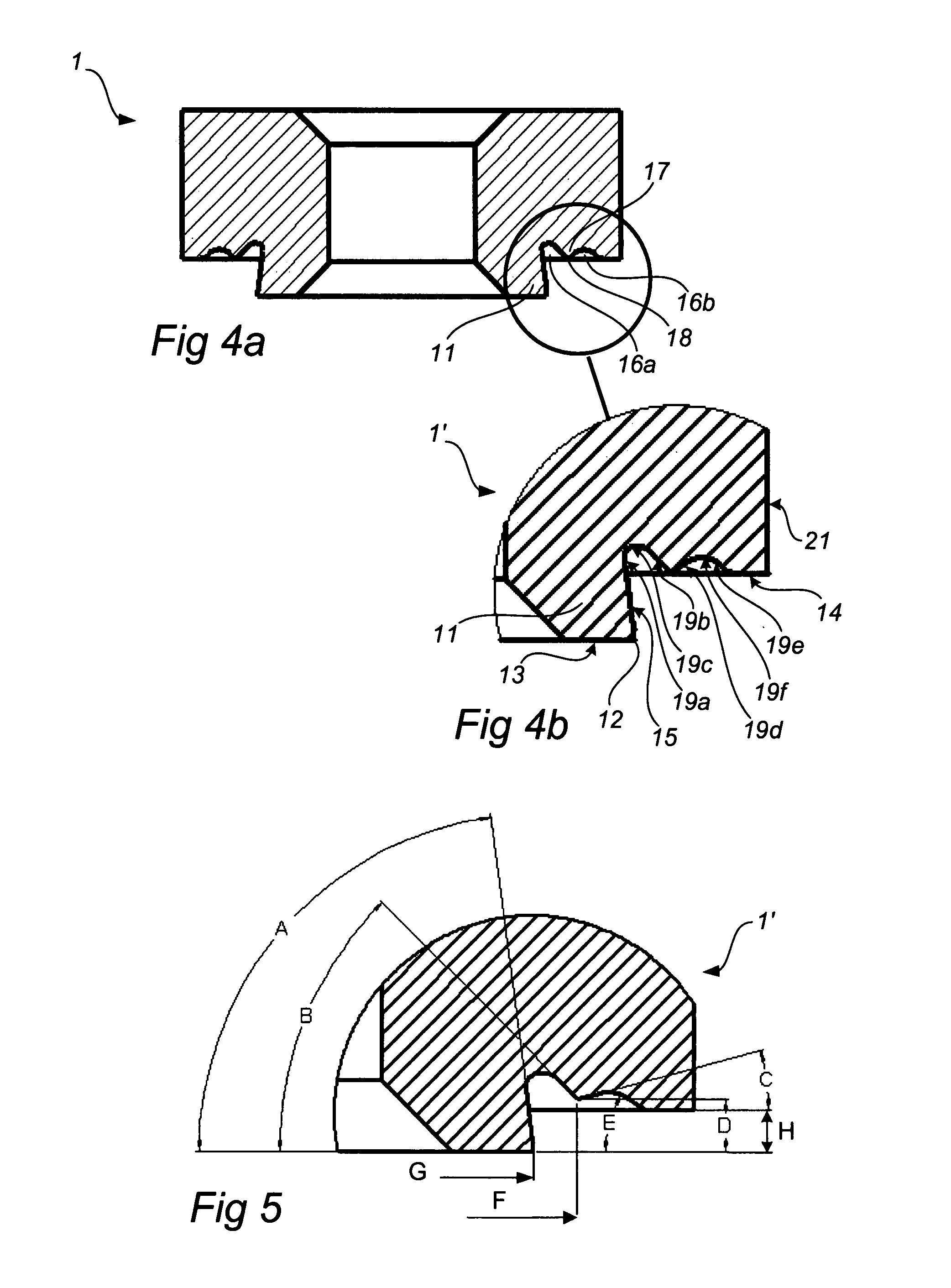Pierce nut and use thereof
a nut and nut technology, applied in the field of pierce nut, can solve the problems of increasing the load on the punching tool, increasing the risk of tool damage, increasing the wear and tear of the punching die, etc., and achieve the effect of reducing or eliminating the problems associated with the nu
- Summary
- Abstract
- Description
- Claims
- Application Information
AI Technical Summary
Benefits of technology
Problems solved by technology
Method used
Image
Examples
Embodiment Construction
[0060]The pierce nut 1 is designed so as to punch its own hole during the punching operation and to push sheet material into grooves, undercuts etc. in the pierce nut during the operation.
[0061]Depending on the sheet thickness, there are different optimized geometries.
[0062]The pierce nut 1 has a centered, threaded through hole 5. On the underside of the pierce nut, in the following referred to as the engagement side 10, a pilot 11 protrudes. The protrusion H of the pilot 11 relatively to the end surface 14 of the other portion on the engagement side 10 depends primarily on the sheet thickness. Generally, the protrusion H is about 1.2 mm for sheet thicknesses up to about 1.3-1.6 mm and about 0.65 mm for sheet thicknesses up to about 0.7-1.2 mm.
[0063]The pilot 11 has a plane, annular end surface 13 with a punching edge 12 which engages a sheet 4 and a punching die 3 during the actual punching (FIGS. 6-8). Radially outside the pilot 11, an annular wall surface 15 is provided which is ...
PUM
| Property | Measurement | Unit |
|---|---|---|
| angle | aaaaa | aaaaa |
| angle | aaaaa | aaaaa |
| angle | aaaaa | aaaaa |
Abstract
Description
Claims
Application Information
 Login to View More
Login to View More - R&D
- Intellectual Property
- Life Sciences
- Materials
- Tech Scout
- Unparalleled Data Quality
- Higher Quality Content
- 60% Fewer Hallucinations
Browse by: Latest US Patents, China's latest patents, Technical Efficacy Thesaurus, Application Domain, Technology Topic, Popular Technical Reports.
© 2025 PatSnap. All rights reserved.Legal|Privacy policy|Modern Slavery Act Transparency Statement|Sitemap|About US| Contact US: help@patsnap.com



